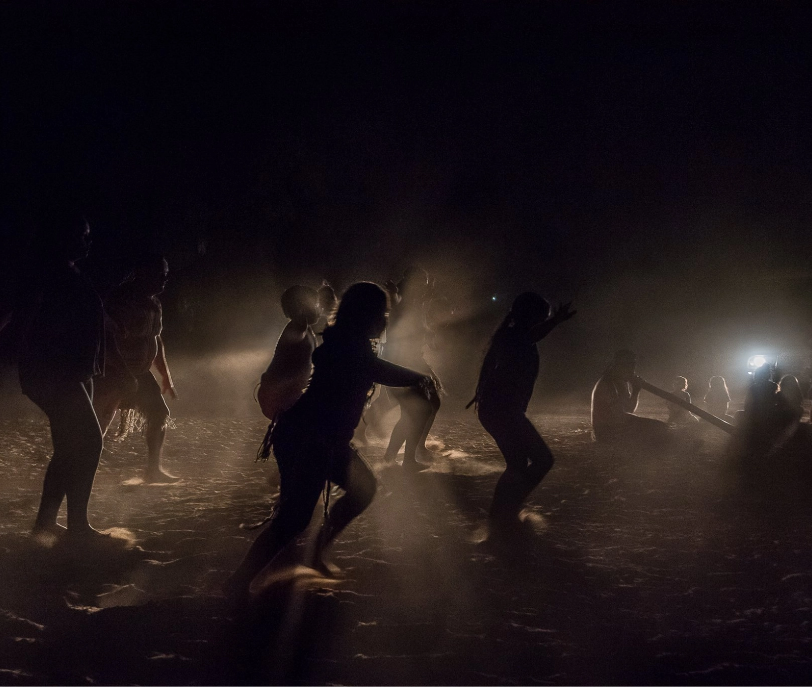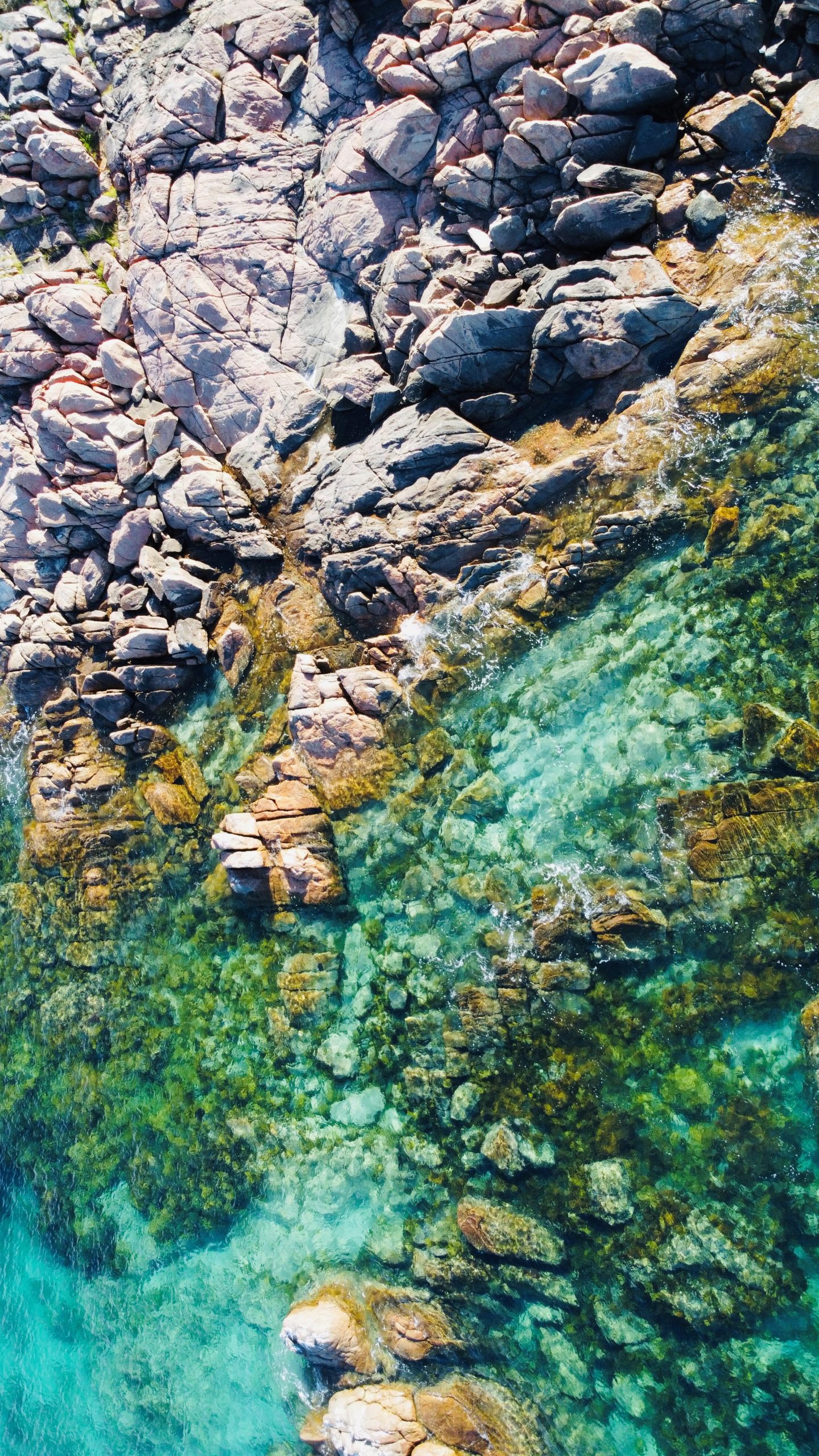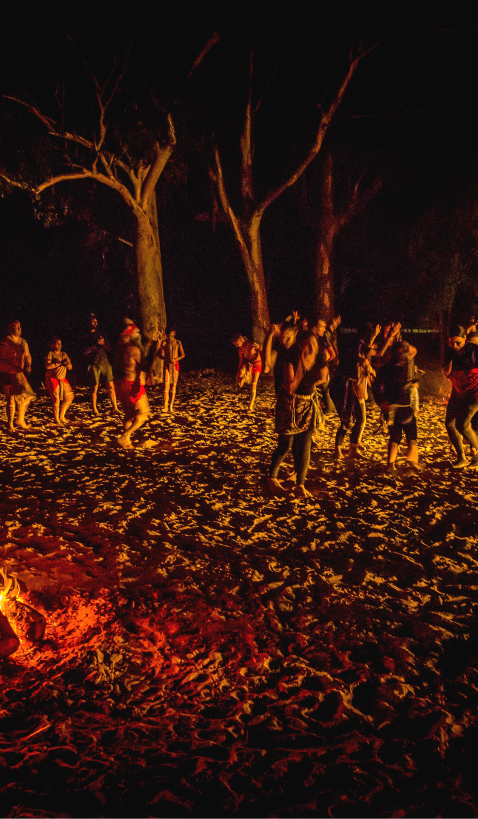
The protection and preservation of First Nations Cultural Heritage is a shared responsibility between First Nations Peoples, governments, and the broader community.

The practice of managing and caring for culture is at the heart of our Cultural Heritage. These cultural obligations are about continuing and strengthening culture. This includes ‘Caring for Country,’ cultural fire management, protecting sacred sites, objects and trees, and passing knowledge to future generations.

Dhawura Ngilan is a vision for Aboriginal and Torres Strait Islander heritage in Australia and the Best Practice Standards in Indigenous Cultural Heritage management and legislation. First Nations People need to be in control of their own culture and heritage.
At the suggestion of the Winanggaay Ngunnawal Language Group, the name Dhawura Ngilan (Remembering Country) was given to this vision.
First Nations Peoples have a right to control their own culture and heritage, given culture and heritage are essential to our identity, well-being, and sense of belonging. When First Nations Peoples are able to control their own culture and heritage, it empowers us to:
- Preserve and transmit knowledge and traditions to future generations.
- Practice culture and ceremonies freely.
- Control and manage and care for sacred sites and cultural objects.
- Negotiate with governments and developers on the use of our land and resources.
- Promote our Culture and Heritage to the wider community, fostering respect and understanding.
- Self-determination and control.
- Express cultural relationship and obligation to plants and animals.
- Appropriate care of water and waterways
- Language revitalisation
- Culturally safe care Traditional Knowledge
- Care for Country
- Manage and care of Ancestral Remains
- End the theft of our cultural knowledge and creative expression.
- Contribute to vibrant Arts, Performance and Tourism sectors.
There are a number of ways in which First Nations People can exercise control over their culture and heritage. These include:
- Working with governments and developers to ensure that their interests are protected on their terms.
- Protecting sacred sites and objects.
- Developing cultural programs and activities.
- Establishing cultural centres and keeping places.
- Educating the wider public about First Nations culture and heritage.
By taking these steps, First Nations peoples can assert their right to control their own Culture and Heritage and ensure it is preserved for future generations.
First Nations Peoples are asserting control over their Culture and Heritage through some of the following programs.
Below are some examples of how First Nations people are asserting control over their Culture and Heritage:
- The Yolngu people of Arnhem Land in Australia have established a number of cultural centres and museums, including the Buku-Larrnggay Mulka Art Centre and the Yirrkala Museum. These centres preserve and promote Yolngu culture and heritage.
- The Wiradjuri people of New South Wales in Australia have developed a number of cultural programs and activities, including the Wiradjuri Language Program and the Wiradjuri Dance Troupe. These programs help to keep Wiradjuri culture and language alive.
- The Gunditjmara people of Southern Victoria have protected a number of sacred sites, including the Budj Bim Cultural Landscape. This landscape is a World Heritage Site and is sacred to the Gunditjmara people.


Tangible Cultural Heritage is the physical evidence of First Nations culture, such as:
These are places where First Nations Peoples lived, worked, and played. They can include middens (garbage dumps), burial sites, and stone tools.
This includes paintings, sculptures, baskets, and other objects created by First Nations Peoples.

Noongar Country, Southwest Boojarah Country of the Wadandi People.
Photographer: Jasmine Yarran
Intangible Cultural Heritage is the non-physical aspects of a culture, such as knowledge, skills, practices, and traditions. It cannot be seen or touched but is just as important as tangible Cultural Heritage. Examples include:
The languages spoken by First Nations People are a vital part of their culture. They contain a wealth of knowledge about the land, the Dreaming, and the ancestors.
Today there are approximately 150 Aboriginal and Torres Strait Islander languages still spoken in Australia, with only 14 languages considered strong.

These are important forms of expression for First Nations People. They can be used to tell stories, celebrate events, and connect with the spiritual world.
These are important forms of expression for First Nations People. They can be used to tell stories, celebrate events, and connect with the spiritual world.
Tangible and intangible heritage are both important aspects of First Nations Culture – both need to be protected and preserved. They are interconnected and tell the story of First Nations Peoples and our relationship to the land.
First Nations Cultural Heritage is important for many reasons. It is a source of identity and pride for First Nations peoples.
It helps to ancestors and to the land. It is also a repository of knowledge and wisdom that can be used to solve the challenges of the present and the future.
The destruction of First Nations Cultural Heritage is a form of cultural genocide. It severs First Nations peoples inherent connections to their ancestors, to country, and to culture. It also deprives future generations of the opportunity to learn from this rich and valuable legacy.
The Alliance embodies the principle that we must ourselves determine our lives, our rights, our responsibilities, our Cultures and our future.
We must all work together to protect and preserve First Nations cultural heritage, as a matter of urgency and justice.

Photographer: Benjamin Warlngundu Ellis

The concept of “Country” is central to Aboriginal culture. It refers to the land, sea, and sky, as well as the spiritual and cultural relationship between Aboriginal people and their environment. Our connection to Country is spiritual, emotional and physical.
Given its complexity the concept of Country can be difficult for non-Aboriginal people to understand. It is not just about the physical land, but also the plants, animals, water, and other natural features. It is also about the stories, songs, and ceremonies associated with the land.
For Aboriginal people, Country is more than just a place to live. It is a source of identity, culture, and spirituality. It is where our ancestors are buried, where we learn our languages and cultures, and where we feel most connected to the Dreaming.
We view earth as a living being. We are born of Mother Earth which we refer to as our Country, and in turn Country gives us our Dreaming. As Aboriginal people we are the custodians of the land and have a responsibility to care for it. We carry a deep understanding of the land and its resources, having developed sustainable ways of living on the land.
Our continent, now called Australia, comprises some 300 different Countries. Each Country is occupied by different language groups, each with their distinctive customs, laws, traditions, and histories, not dissimilar to continental Europe with its multiple countries of different people with different languages, customs and histories. Our different Cultures reflect the varying environments we live in, that of coastal, desert, bush or stone Country.
Unlike the Western view of land, we do not own land, the land owns us; we belong to the land as we do to our mother and our ancestors. This gives us a powerful sense of belonging to our place in the world, both physically and spiritually. In turn, we must protect and care for our place on Country as one would for one’s mother. The expression ‘caring for Country’ comes from this strong personal attachment and responsibility to Country.

Everyday across Australia First Nations Cultural Heritage
is being damaged, destroyed and displaced.
This threatens the physical and emotional wellbeing of communities and impacts upon their ability to fulfil their cultural obligations.
- Development: The development of mining, agriculture, offshore and infrastructure projects.
- Urbanisation: The expansion of cities and towns can encroach on Aboriginal land and destroy or damage cultural heritage sites.
- Tourism: Unmanaged tourism can also damage Aboriginal cultural heritage sites. Link to Daintree case study
- Feral animal invasion: Feral animals, such as foxes and rabbits, can damage Aboriginal cultural heritage sites.
- Climate change: Climate change is causing sea levels to rise and extreme weather events to become more common. This is threatening Aboriginal cultural heritage sites that are located near the coast or in areas that are prone to flooding or erosion.
- Loss of language: The loss of Aboriginal languages is a threat to Aboriginal cultural heritage. Languages are a way of preserving knowledge and stories about the land and the Dreaming.
- Loss of traditional knowledge: The loss of traditional knowledge is also a threat to Aboriginal cultural heritage. Traditional knowledge is essential for the management of land and resources, and for the practice of traditional ceremonies and practices.
- Intergenerational trauma: Intergenerational trauma, which is the ongoing impact of colonisation and oppression on Aboriginal people, can also contribute to the loss of cultural heritage. This is because trauma can make it difficult for Aboriginal people to connect with their culture and heritage.
Our stories are told through song, dance and art and tell of the deep knowledge held in Country. Our history is written in this land.

